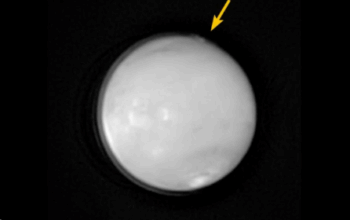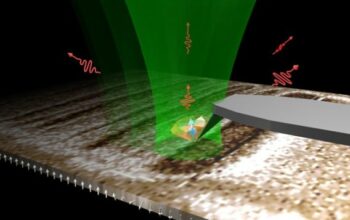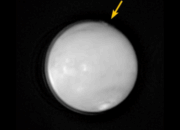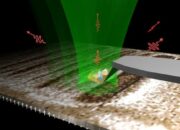Light, a fundamental aspect of our universe, is often taken for granted in its quotidian role illuminating the world around us. Yet, its velocity is a profound concept that conveys not only scientific importance but also philosophical inquiries into the very fabric of reality. To grasp how fast light can circle the Earth in a fiber optic cable, we must explore various dimensions of light itself, the properties of fiber optics, and the implications of its speed.
The speed of light in a vacuum is standardly measured at approximately 299,792 kilometers per second (km/s). This staggering velocity has led to the formulation of Einstein’s theory of relativity, which postulates that nothing can surpass this cosmic speed limit. However, the phenomenon of light’s speed in different mediums provides an intriguing avenue for exploration. When light traverses through materials—such as air, glass, or water—it experiences refraction, resulting in a decrease in its velocity. In fiber optic cables, which are typically made of glass or plastic, light propagates at a speed that is notably slower than in a vacuum.
The distinctive architecture of fiber optic cables, comprised of a core, cladding, and protective layer, facilitates the efficient transmission of light. The core, where the light travels, is surrounded by cladding that has a lower refractive index. This configuration engenders total internal reflection, ensuring that light remains confined within the core. Depending on the specifications and materials used, the speed of light in a fiber optic cable can reach approximately 200,000 km/s, which is about two-thirds of its maximum speed in a vacuum. Such reduction, while profound, still embodies swift movement through the cable’s infrastructure.
To entertain the concept of how fast light can encircle the Earth through such a medium, it is instructive to understand the scale of our planet. The circumference of the Earth at the equator measures around 40,075 kilometers. By employing the aforementioned speed of light in fiber optic cables (200,000 km/s), we can compute the duration it takes for a light signal to complete one cognitive lap around our planet.
The mathematical derivation is deceptively simple. When we divide the circumference of the Earth by the speed of light in a fiber optic medium, we uncover the time taken for this remarkable journey:
Time = Circumference / Speed = 40,075 km / 200,000 km/s.
This calculation yields a time span of approximately 0.200375 seconds or a mere 200.3 milliseconds. Such a fleeting interval promotes imagination; it challenges our perception of distance and communication. In the vast landscape of technological advancement, this rapidity has explosive implications. The swift transmission of data via fiber optics has revolutionized telecommunications, allowing for seamless connectivity across vast distances. The blink of an eye now encapsulates global interaction, bridging continents in nanoseconds.
Yet, beyond advocating a sense of awe, understanding the limits of fiber optic technology sheds light on its implications for modern society. The speed at which light travels in fiber optics delineates the threshold of bandwidth available for digital communications. As our civilization entrusts more reliance on high-speed internet and instantaneous communication, fiber optics emerge as a hallmark of progress, transforming everyday experiences.
Furthermore, the technical underpinnings behind fiber optic technology lead to profound inquiries in the realms of science and engineering. Innovators are continually seeking ways to enhance the transmission capacity of optical fibers, pursuing advancements such as multi-core fibers and photonic crystals. These innovations promise not only to optimize existing capabilities but also to cater to the ever-increasing demands for data transmission in a hyper-connected world.
In juxtaposition, one must contemplate the philosophical dimensions evoked by the unerring speed of light, particularly in a fiber optic capacity. By transcending geographical boundaries, light embodies the potentiality of instantaneous communication—a facet that has recalibrated our understanding of time and space. As light courses through cables, it encapsulates real-time relationships, fostering connections that render physical distance trivial.
Moreover, as we stride into an era defined by artificial intelligence, Big Data, and the Internet of Things, the implications of light-speed communication impose substantial ethical and existential considerations. The convergence of technology with human experience raises questions about privacy, autonomy, and the essence of interpersonal relationships. Are we perhaps sacrificing the inherently human experience of time and absence for the sake of convenience and connectivity?
In conclusion, the fleeting speed of light within fiber optic cables serves as a powerful reminder of both our scientific prowess and the philosophical inquiries it incites. As we marvel at the ability for light to circle the Earth in approximately 200 milliseconds, we must remain cognizant of the profound implications this technology bestows upon society and our understanding of reality. The inquiry into how fast light travels through fiber optics not only captivates the intellect; it compels us to examine our future amid an unfurling tapestry of light-speed connectivity.










